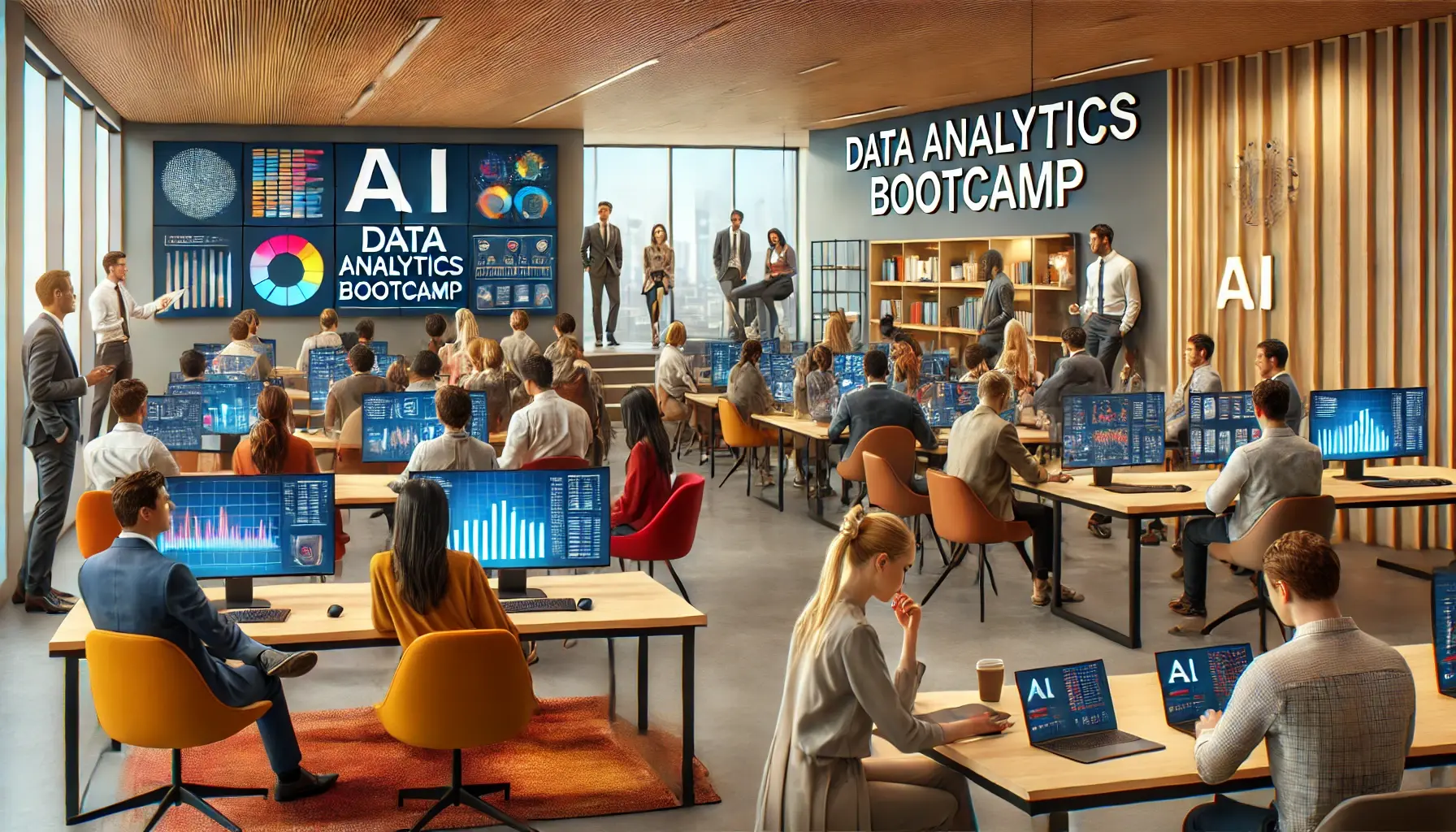6 min read
Understanding AI: How It Works and Its Impact on the USA
How Does Artificial Intelligence Work? Artificial Intelligence (AI) has become a transformative force in modern society, driving innovations across...
3 min read
![]() The Amazing Team at Skills Data Analytics
:
Apr 5, 2024 8:45:00 AM
The Amazing Team at Skills Data Analytics
:
Apr 5, 2024 8:45:00 AM
Data visualization is an essential skill for anyone working with data in Python. By mastering data visualization techniques, you can effectively communicate insights and patterns in your data.
One important aspect of mastering data visualization is understanding the different types of charts and graphs available in Python. This includes bar charts, line charts, scatter plots, histograms, and more. Each type of chart has its own strengths and weaknesses, and being able to choose the right chart for your data is crucial.
Additionally, mastering data visualization techniques involves learning how to customize your visualizations to make them more informative and visually appealing. This includes adding labels, titles, and annotations to your charts, adjusting colors and styles, and incorporating interactive elements.
By investing time in mastering data visualization techniques in Python, you can unlock the full potential of your data and gain valuable insights.
Data visualization plays a crucial role in data analysis and decision-making. It allows us to understand complex data sets, identify patterns and trends, and communicate insights effectively.
One of the main advantages of data visualization is its ability to simplify complex information. Through visual representations such as charts and graphs, we can quickly grasp the key messages and trends in our data. This makes it easier to identify outliers, spot correlations, and draw meaningful conclusions.
Furthermore, data visualization enables us to communicate our findings to others clearly and concisely. By presenting data visually, we can engage our audience and make complex information more accessible. This is especially important when presenting data to stakeholders, clients, or colleagues who may not have a strong background in data analysis.
Overall, understanding the importance of data visualization is essential for anyone working with data. It not only enhances our ability to analyze data effectively but also enables us to share our insights with others compellingly.
Python offers a variety of powerful data visualization libraries that make it easy to create stunning visualizations. Some of the most popular libraries include Matplotlib, Seaborn, and Plotly.
Matplotlib is a versatile library that provides a wide range of plotting functions and customization options. It allows you to create basic charts such as line plots, scatter plots, and bar charts, as well as more advanced visualizations like heat maps and 3D plots.
Seaborn, on the other hand, is a high-level library built on top of Matplotlib. It provides a simplified interface for creating aesthetically pleasing statistical visualizations. With Seaborn, you can easily create elegant box plots, violin plots, and categorical plots.
Plotly is another popular library that specializes in interactive visualizations. It allows you to create interactive charts and dashboards that can be embedded in web applications. With Plotly, you can add tooltips, zooming, panning, and other interactive features to your visualizations.
By familiarizing yourself with these data visualization libraries in Python, you can unleash the full potential of your data and create compelling visualizations.
Numerous types of data visualization techniques can be used to represent different types of data and insights. Some commonly used techniques include:
- Bar charts: These are useful for comparing categorical data or showing the distribution of a single variable.
- Line charts: These are ideal for visualizing trends over time or comparing multiple variables.
- Scatter plots: These are effective for visualizing the relationship between two variables and identifying correlations.
- Histograms: These are used to visualize the distribution of a single variable.
- Pie charts: These are suitable for showing proportions or percentages of a whole.
These are just a few examples, and the choice of visualization technique depends on the nature of the data and the insights you want to convey. By exploring different types of data visualization techniques in Python, you can choose the most appropriate visualization for your data.
Interactive visualizations allow users to explore data and gain deeper insights by interacting with the visual elements. Python provides several libraries that enable the creation of interactive visualizations, including Plotly, Bokeh, and Dash.
Plotly is a versatile library that offers a wide range of interactive features. It supports various types of interactive charts, such as scatter plots, line plots, bar charts, and more. With Plotly, you can add hover tooltips, zooming, panning, and other interactive elements to enhance the user experience.
Bokeh is another powerful library for interactive visualizations. It provides a flexible and intuitive API for creating interactive plots, dashboards, and data applications. Bokeh supports a wide range of interactive tools, including hover tooltips, selection tools, and linked plots.
Dash is a Python framework for building analytical web applications. It allows you to create interactive dashboards and deploy them as standalone web apps. With Dash, you can combine interactive visualizations, data tables, and text components to create comprehensive data-driven applications.
By implementing interactive visualizations in Python, you can engage your audience and empower them to explore and analyze data more interactively and intuitively.
When creating data visualizations in Python, it is important to follow best practices to ensure that your visualizations are accurate, informative, and visually appealing.
One best practice is to choose the right chart type for your data. Consider the variables you want to visualize and the relationships you want to highlight. Use appropriate chart types that effectively communicate your message.
Another best practice is to keep your visualizations simple and uncluttered. Avoid unnecessary decorations or excessive use of colors. Use clear labels, titles, and legends to help your audience understand the information presented.
Additionally, it is important to consider the audience when creating data visualizations. Tailor your visualizations to the specific needs and preferences of your audience. Present the data in a way that is easy to understand and relevant to their interests.
Lastly, always ensure the accuracy of your visualizations. Double-check the data used and verify the calculations and transformations applied. Avoid distorting the data or misrepresenting the information.
By following these best practices, you can create impactful and effective data visualizations in Python.
For further exploration of data analysis and analytics, check out our bootcamp program on Data Analytics.

6 min read
How Does Artificial Intelligence Work? Artificial Intelligence (AI) has become a transformative force in modern society, driving innovations across...

3 min read
In the fast-paced world of data analysis and database management, professionals constantly seek tools and methodologies that streamline workflows,...

4 min read
The Best Data Analytics Bootcamp: Unlocking the Power of DataIntroductionIn today's digital age, businesses are generating massive amounts of data at...